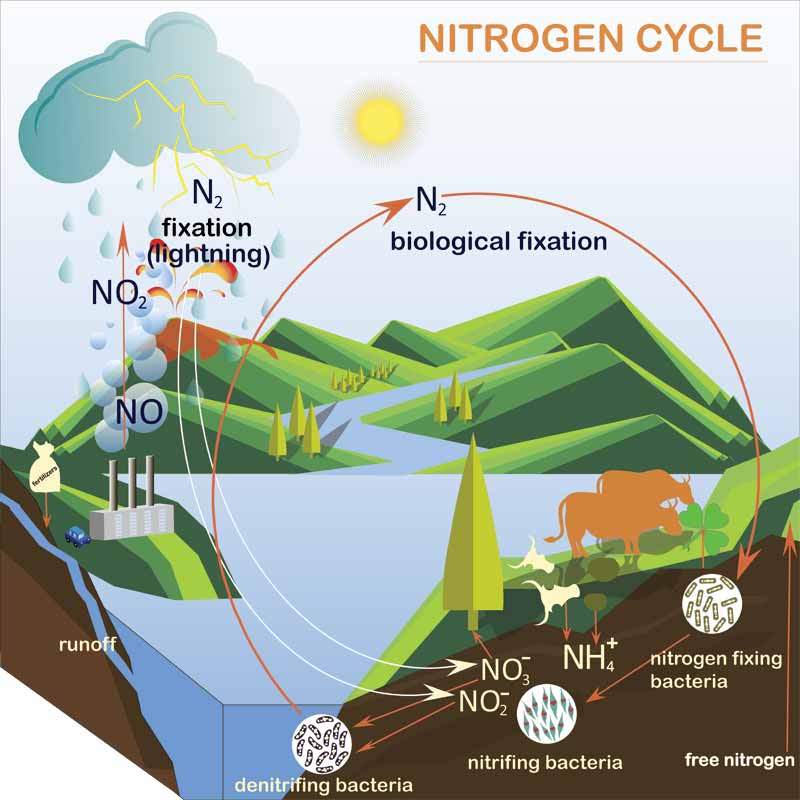Lightning Combines Nitrogen And Oxygen In The Air To Form
Lightning Combines Nitrogen And Oxygen In The Air To Form - At the high temperatures lightning generates, there is enough energy for nitrogen and oxygen in the air to combine, forming nitrogen. This allows the molecules to combine with oxygen and, together, they form nitrogen. During lightning nitrogen and oxygen react to form oxides of nitrogen. The reaction of nitrogen and oxygen to form nitric oxide is favored by high. At such high temperatures, nitrogen and oxygen present in the air combine to form nitric. During lightning, temperatures often reach as high as 3000°c. Lightning breaks apart nitrogen molecules.
At the high temperatures lightning generates, there is enough energy for nitrogen and oxygen in the air to combine, forming nitrogen. During lightning, temperatures often reach as high as 3000°c. Lightning breaks apart nitrogen molecules. The reaction of nitrogen and oxygen to form nitric oxide is favored by high. At such high temperatures, nitrogen and oxygen present in the air combine to form nitric. This allows the molecules to combine with oxygen and, together, they form nitrogen. During lightning nitrogen and oxygen react to form oxides of nitrogen.
This allows the molecules to combine with oxygen and, together, they form nitrogen. Lightning breaks apart nitrogen molecules. During lightning, temperatures often reach as high as 3000°c. During lightning nitrogen and oxygen react to form oxides of nitrogen. At such high temperatures, nitrogen and oxygen present in the air combine to form nitric. At the high temperatures lightning generates, there is enough energy for nitrogen and oxygen in the air to combine, forming nitrogen. The reaction of nitrogen and oxygen to form nitric oxide is favored by high.
During lightning flashes, nitrogen combines with oxygen in the
During lightning nitrogen and oxygen react to form oxides of nitrogen. This allows the molecules to combine with oxygen and, together, they form nitrogen. During lightning, temperatures often reach as high as 3000°c. At such high temperatures, nitrogen and oxygen present in the air combine to form nitric. Lightning breaks apart nitrogen molecules.
Ecosystems. ppt download
During lightning nitrogen and oxygen react to form oxides of nitrogen. At such high temperatures, nitrogen and oxygen present in the air combine to form nitric. During lightning, temperatures often reach as high as 3000°c. Lightning breaks apart nitrogen molecules. The reaction of nitrogen and oxygen to form nitric oxide is favored by high.
Explain the conversion of nitrogen into nitrates during lightning.
At such high temperatures, nitrogen and oxygen present in the air combine to form nitric. The reaction of nitrogen and oxygen to form nitric oxide is favored by high. At the high temperatures lightning generates, there is enough energy for nitrogen and oxygen in the air to combine, forming nitrogen. During lightning, temperatures often reach as high as 3000°c. Lightning.
Question Video Identifying the Product from the Reaction between
Lightning breaks apart nitrogen molecules. This allows the molecules to combine with oxygen and, together, they form nitrogen. During lightning nitrogen and oxygen react to form oxides of nitrogen. During lightning, temperatures often reach as high as 3000°c. The reaction of nitrogen and oxygen to form nitric oxide is favored by high.
6.5 Biogeochemical Cycles Biology LibreTexts
The reaction of nitrogen and oxygen to form nitric oxide is favored by high. This allows the molecules to combine with oxygen and, together, they form nitrogen. At the high temperatures lightning generates, there is enough energy for nitrogen and oxygen in the air to combine, forming nitrogen. At such high temperatures, nitrogen and oxygen present in the air combine.
SOLVED During lightning flashes, nitrogen combines with oxygen in the
The reaction of nitrogen and oxygen to form nitric oxide is favored by high. At the high temperatures lightning generates, there is enough energy for nitrogen and oxygen in the air to combine, forming nitrogen. At such high temperatures, nitrogen and oxygen present in the air combine to form nitric. During lightning nitrogen and oxygen react to form oxides of.
Why is the Nitrogen Cycle So Important?
At the high temperatures lightning generates, there is enough energy for nitrogen and oxygen in the air to combine, forming nitrogen. Lightning breaks apart nitrogen molecules. The reaction of nitrogen and oxygen to form nitric oxide is favored by high. This allows the molecules to combine with oxygen and, together, they form nitrogen. During lightning, temperatures often reach as high.
The Nitrogen Cycle Chapter ppt download
At such high temperatures, nitrogen and oxygen present in the air combine to form nitric. During lightning, temperatures often reach as high as 3000°c. Lightning breaks apart nitrogen molecules. This allows the molecules to combine with oxygen and, together, they form nitrogen. The reaction of nitrogen and oxygen to form nitric oxide is favored by high.
Nitrogen and Oxygen combines in the ratio of 716 form nitrogen dioxide
This allows the molecules to combine with oxygen and, together, they form nitrogen. At the high temperatures lightning generates, there is enough energy for nitrogen and oxygen in the air to combine, forming nitrogen. At such high temperatures, nitrogen and oxygen present in the air combine to form nitric. Lightning breaks apart nitrogen molecules. The reaction of nitrogen and oxygen.
Ammonia and nitrates in pools Understanding how these chemical
This allows the molecules to combine with oxygen and, together, they form nitrogen. During lightning nitrogen and oxygen react to form oxides of nitrogen. At such high temperatures, nitrogen and oxygen present in the air combine to form nitric. Lightning breaks apart nitrogen molecules. During lightning, temperatures often reach as high as 3000°c.
During Lightning, Temperatures Often Reach As High As 3000°C.
The reaction of nitrogen and oxygen to form nitric oxide is favored by high. At the high temperatures lightning generates, there is enough energy for nitrogen and oxygen in the air to combine, forming nitrogen. This allows the molecules to combine with oxygen and, together, they form nitrogen. During lightning nitrogen and oxygen react to form oxides of nitrogen.
Lightning Breaks Apart Nitrogen Molecules.
At such high temperatures, nitrogen and oxygen present in the air combine to form nitric.
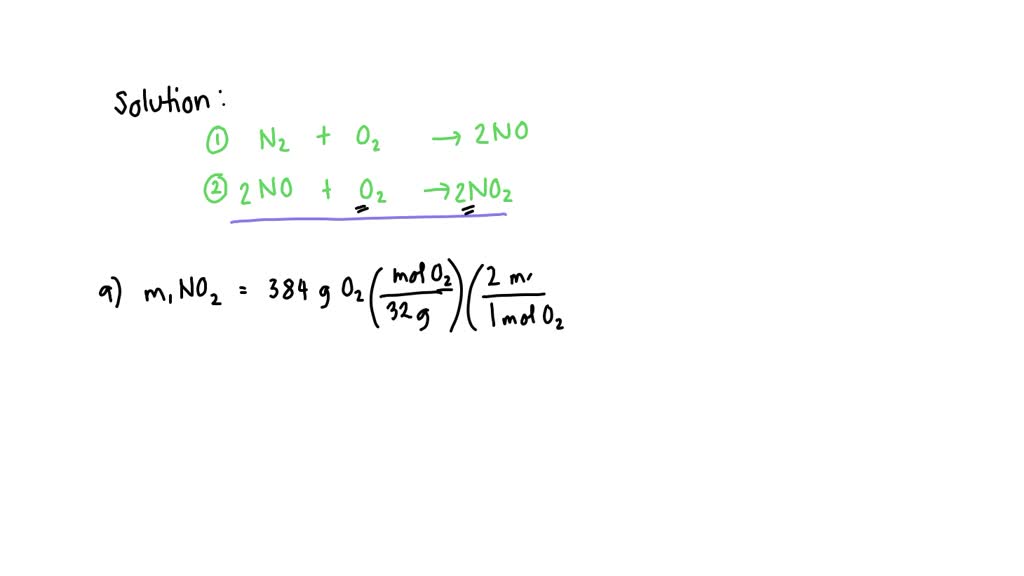
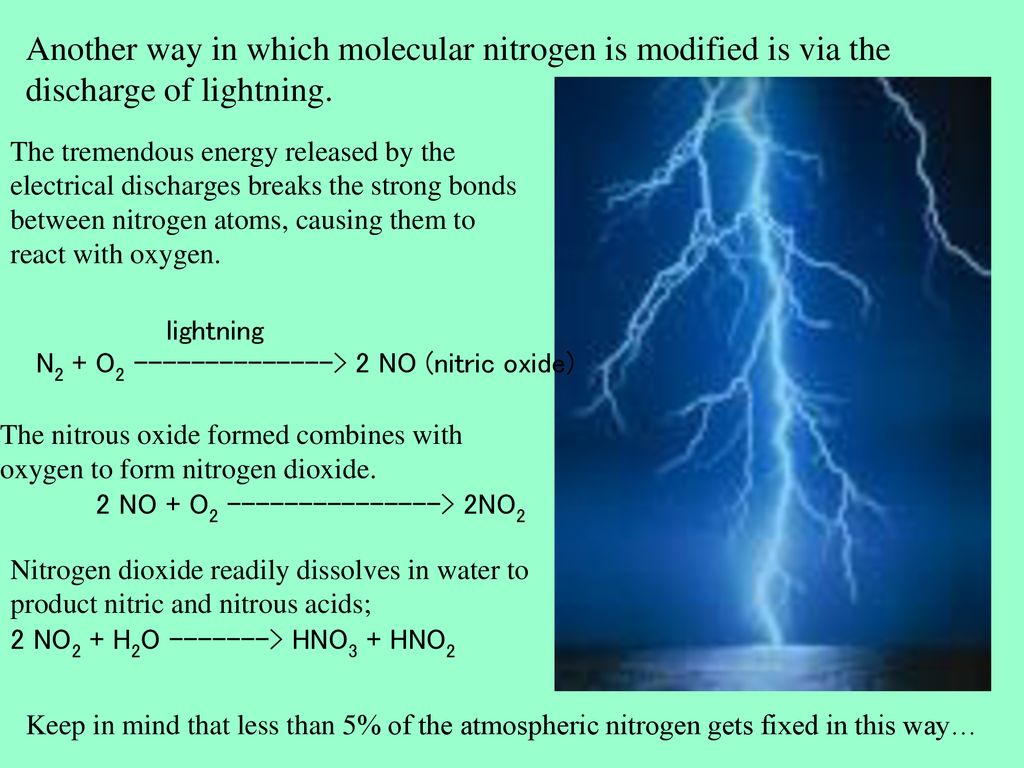


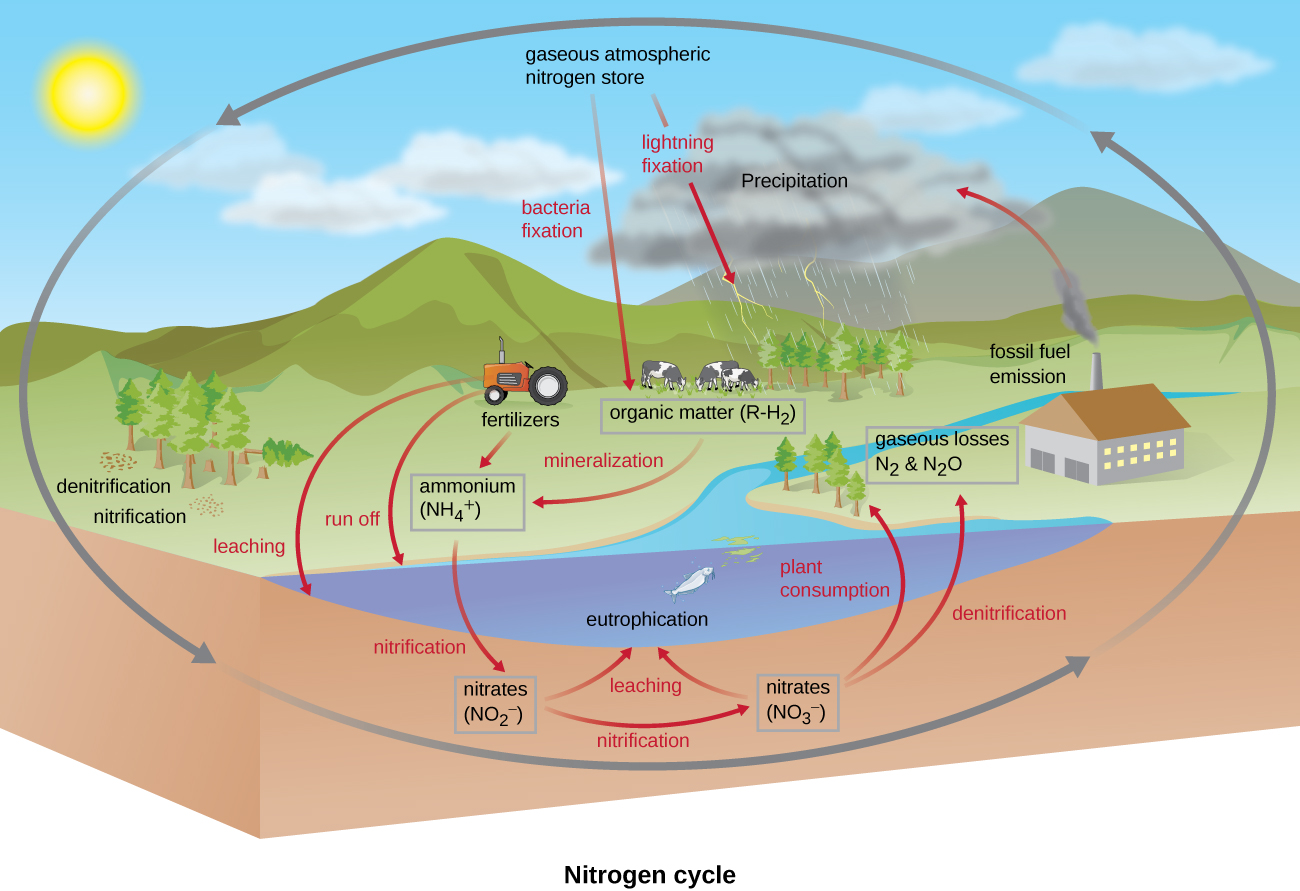
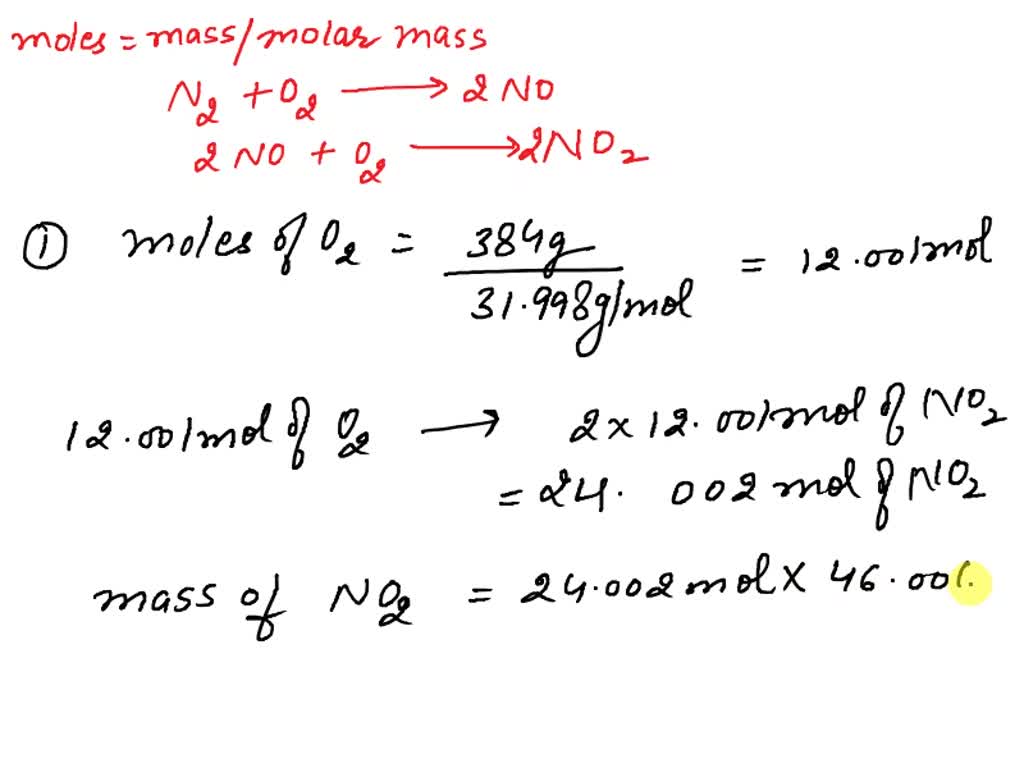
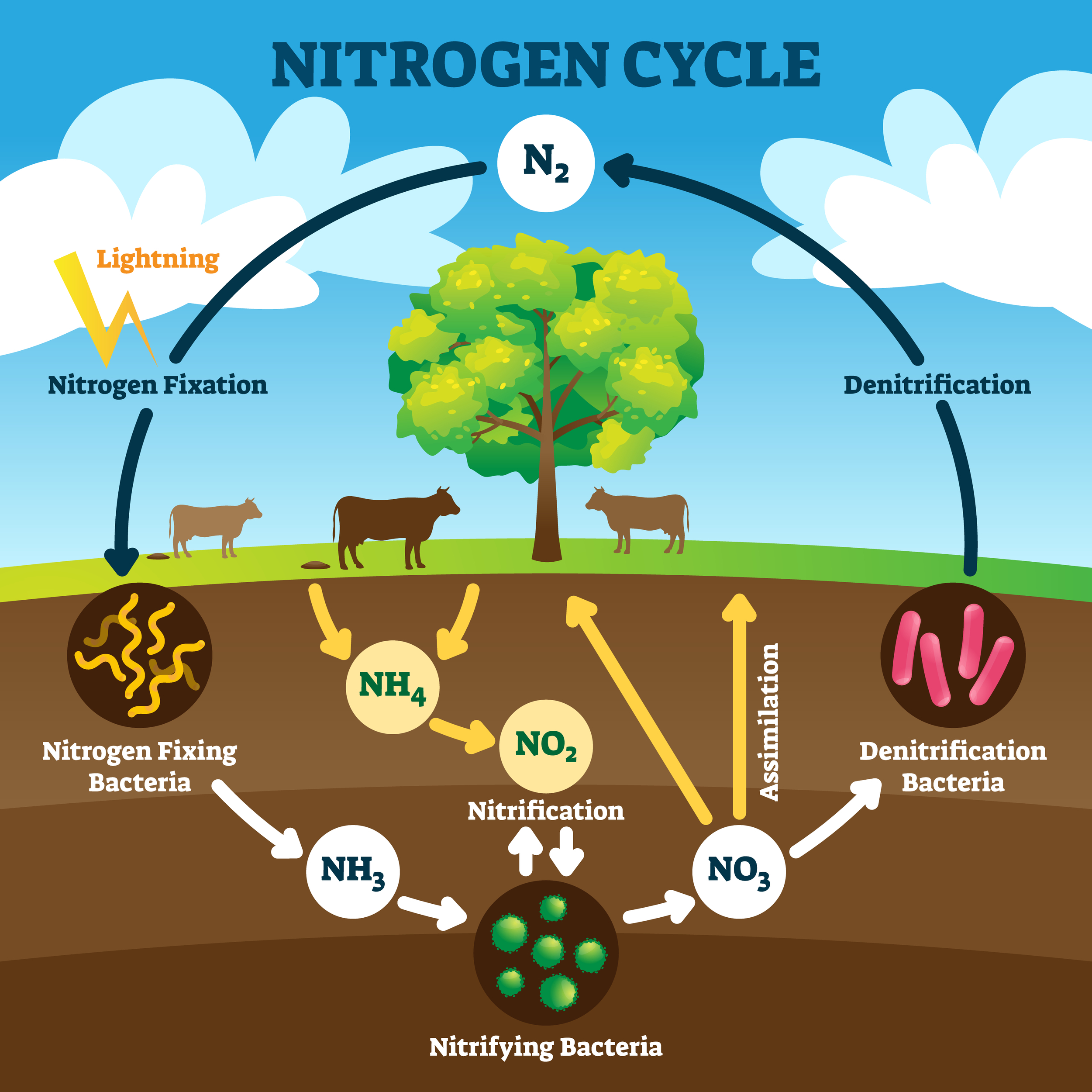
+Lightning+breaks+nitrogen+molecules+apart+.+Combines+with+oxygen+forming+nitrogen+oxides+(N2O).+N2O+dissolves+in+rain%2C+forming+nitrates.+Nitrates+(NO3)+are+carried+to+the+ground+with+the+rain..jpg)

